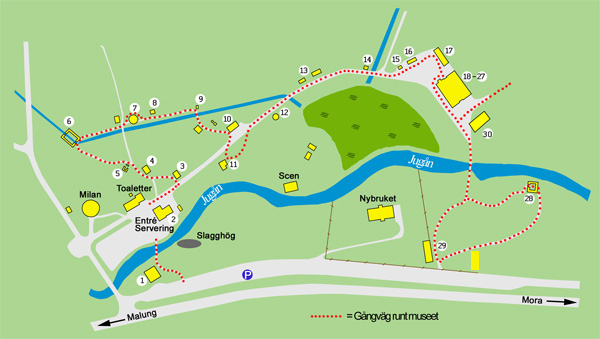|
Siljansfors Forestry Museum
|
|
Welcome to the forestry museum at Siljansfors. Situated in a beautiful and mountainous wooded landscape the museum offers a telling tribute to one of Swedens most important industries, förestry. Visitors can follow the developement of workers living and working conditions over the last century as technologies and demands changed. The museum combines open-air areas of authentic living quarters and workplaces, with large exhibition halls displaying equipment och forestry practices. Visitors can enjoy a full meal or lighter refreshments at the museum cafeteria. During the years 1738-1876 Siljansfors was a thriving ironworks, and indeed Moras first industrial developement. The remains of the works now provide a scenic and cultural backdrop to the forestry museum which has been established here. Visitors are met by a magnificent and well preserved stone blastfurnace, as well as the remains of a bessemer works and cooling canals from the period. For those who would like to come in to the forest and learn more there are several different forestry trails beginning from and returning to the forestry museum. The trails are well marked and have informative signs placed at key locations. Some trails explore natural aspects and others cultural topics. One trail explores the forestry lifecycle from planting, through cutting to harvesting. For younger children there is a special nature trail. Trails range from 1 to 5 km. Across the main road from the museum is an arboretum (tree park) on a site of 1,5 ha. There we have planted over 70 different tree species since 1994 and it makes an interesting part of a visit to Siljansfors. |
||||||||||||||||||||||||||||||
 |
||||||||||||||||||||||||||||||
|
